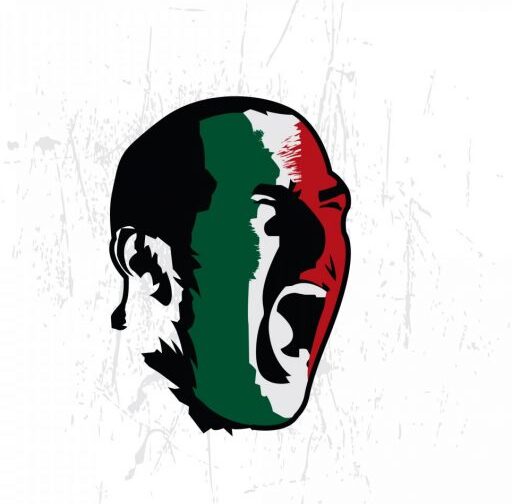Recently appointed Bologna boss Sinisa Mihajlovic was probably expecting to turn 50 as an out-of-work coach, yet the Serbian finds himself back in the thick of Serie A action and a league where his majestic left-foot made him a worldwide star.
Along with Andrea Pirlo, the former defender holds the all-time record for freekick goals on the peninsula, netting an astonishing 28 while wearing the colours of Roma, Sampdoria, Lazio and Inter.
However, few that grew up with the young Mihajlovic in Borovo would have been surprised at trophy rich career of someone who displayed a single mindedness and determination even in his formative years.
After leaving his hometown club and helping an unfancied Vojvodina to the Yugoslav First League title, the 21-year-old rejected a move to Croatian giants Dinamo Zagreb. Offended by the offer of a scholarship-based contract.
The decision would ultimately deny Mihajlovic a FIFA World Youth Championship medal, as coach Mirko Jozic attempted to use his place in the squad as an incentive to join Dinamo, but that in truth brought him even greater success.
After moving to Red Star Belgrade in 1990, the then-midfielder formed one of the greatest teams of the decade. Beating all before them as they captured the 1991 European Cup and Intercontinental Cup, before war swept through the Balkans.
A match-winning two-goal display in the semi-final against Bayern Munich and a confidently struck penalty in the shootout against Marseille during the European Cup final in Bari, were equally as important as the creative genius of Dejan Savicevic and Robert Prosinecki.
However, in Belgrade, the darker side of Mihajlovic’s character was unearthed, as he was sent-off in two brutal encounters with Hadjuk Split. After several violent clashes with Igor Stimac, the Yugoslav Cup final even had to be halted to restore calm.
Arriving at Roma in 1992, few expected much of an impact due to the three foreigner rule, however, once again his desire saw him make 29 Serie A appearances and condemn the likes of Thomas Hassler and Claudio Caniggia to bench duty.
The gradual switch to a defensive role was not appreciated though, later describing it as ‘the two worst seasons of my entire career’ and possibly why he retained an attachment to the No.11 shirt at a number of clubs.
At Sampdoria, it was at centre-back, surprisingly, that Mihajlovic appeared to have a much more enjoyable spell between 1994 and 1998. Perhaps as he had the companionship of countryman Vladimir Jugovic and began cultivating a reputation as a set-piece specialist.
The Serbian was a born winner though, and despite becoming a fan favourite, it was never going to be enough to keep him in Liguria and former coach Sven-Goran Eriksson paid €8.5 million to add that mentality to an expensively assembled Lazio squad.
Despite the vast sums spent on attacking talent by the Biancocelesti, the relatively small fee paid to take Mihajlovic back to the capital was arguably the best return on investment.
During the most successful period in their history, Mihajlovic made 190 appearances for Lazio and amassed an impressive 32 goals from the back, aided by a famous hat-trick of free-kicks against the Blucerchiati.
In six seasons with Lazio, the tough-tackling defender had refilled his trophy cabinet with seven additional winners medals, adding another European crown – the 1999 UEFA Cup Winners’ Cup – to a historic Serie A and Coppa Italia double in 2000.
Just as with Red Star, acts of aggressive ill-discipline accompanied success on the pitch. During an ill-tempered Champions League tie with Arsenal in 2000, he was found to have racially abused Patrick Vieira and received an eight-match ban in 2003 for spitting at Chelsea’s Adrian Mutu.
That the pair later played under Mihajlovic for Inter (as assistant coach) and Fiorentina, respectively, would indicate some acceptance that a tendency for misconduct was linked to unrelenting will to win.
At the age of 35, that steely determination saw former teammate Roberto Mancini take the Serbian to Inter in 2004 for one last Serie A swansong and fittingly ended with another Scudetto.
After 15 years in Italy, his first steps into coaching were always going to be in the land he knew best, but after showing as much tactical acumen as tenacity during his playing days, few would have expected the results it has yielded.
In the last decade, Mihajlovic has taken the reins at Bologna (twice), Catania, Fiorentina, Sampdoria, AC Milan, Torino, Sporting Lisbon (for nine days) and the Serbian national team, with varying degrees of success but not a single piece of silverware.
However, it would take a monumental achievement on the sidelines to surpass what the Serbian achieved on the pitch and will always be remembered as one of the greatest players, and greatest set-piece specialists, of his generation.


